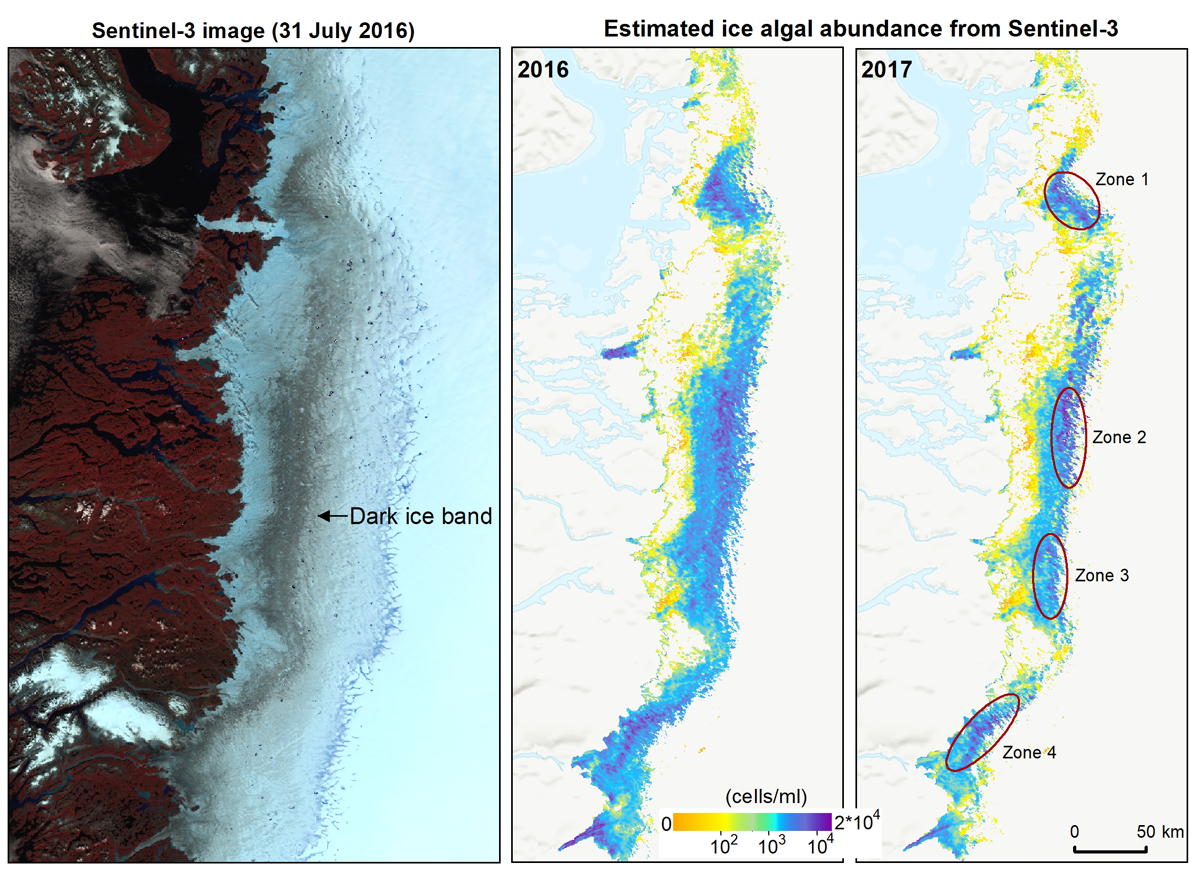
Massive algae blooms are staining Greenland’s ice sheets pink, green, and brown, darkening the ice and causing it to absorb more solar radiation. Recent studies have shown that these blooms play an even bigger role than dust and black carbon in melting the ice sheet, which holds enough water to raise the ocean by 6 meters (20 feet). Now, a new satellite survey reveals the algae’s spread from space.
Greenland ice has large, dark swathes of dust, microbes, and other impurities that reduce the ice’s albedo, the amount of solar radiation it reflects back to space. Whereas a pure, blindingly white surface has an albedo of 1, bare ice has an albedo from 0.5 to 0.7, reflecting about 50%–70% of solar energy. As dirt and microbes darken the ice, they lower its albedo even further, causing the ice to melt faster.
Although scientists have set up a number of field stations to study the algal blooms, the sites are scattered and can’t reveal the extent of species such as those in the class Zygnematophyceae, which turn ice brownish gray. In a new study, Wang et al. used data from the Sentinel satellites—Earth-observing satellites launched by the European Space Agency—to quantify algal blooms in the Greenland ice during the summers of 2016 and 2017. Although most satellites don’t typically capture the narrow spectral signals reflected by algal pigments, the team was able to obtain these from Sentinel and tease them apart from dirt and soot, which also darken ice.
 Observations from the Sentinel-3 satellite in 2016 and 2017 show widespread algal blooms. Credit: Wang et al., 2018, https://doi.org/10.1029/2018GL080455; data from Copernicus Sentinel-3/ESA
Observations from the Sentinel-3 satellite in 2016 and 2017 show widespread algal blooms. Credit: Wang et al., 2018, https://doi.org/10.1029/2018GL080455; data from Copernicus Sentinel-3/ESA
The satellite data revealed widespread algal blooms in July and August, a finding that aligns with the timing of algal proliferations detected at field sites, the team reports. By tracking how algal blooms increase meltwater from the ice sheet’s surface, satellite-based algae mapping could help scientists fine-tune predictions of global sea level rise, they write. (Geophysical Research Letters, https://doi.org/10.1029/2018GL080455, 2018)
—Emily Underwood, Freelance Writer
from Eos https://eos.org/research-spotlights/mapping-ice-algal-blooms-from-space?utm_source=rss&utm_medium=rss&utm_content=mapping-ice-algal-blooms-from-space
via IFTTT

